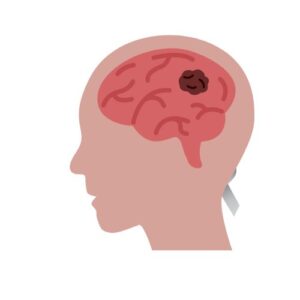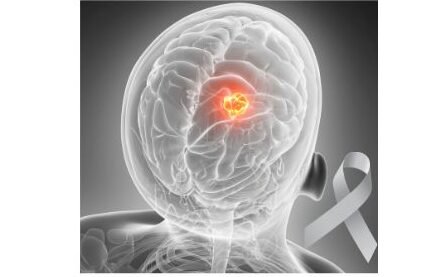Stage 4 Brain Cancer: Complete Timeline from Diagnosis to Treatment
Hey there! If you or someone you know is dealing with a Stage 4 brain cancer diagnosis, you’re probably feeling overwhelmed with a lot of questions. I get it. It’s a tough journey, but knowing what to expect along the way can help ease some of the anxiety and confusion. So, let’s take a closer look at the path from diagnosis to treatment options for Stage 4 brain cancer.
Stage 4 brain cancer is an advanced form of the disease, and it can feel like you’re on an emotional rollercoaster. But don’t worry — there are still treatment options available that can help manage symptoms and even prolong life. I’ll walk you through the entire timeline, including what to expect from the moment the diagnosis is confirmed to what treatment options are on the table.
What Does Stage 4 Brain Cancer Mean?
Stage 4 brain cancer represents the final, most aggressive stage of brain tumors. At this stage, the cancer has already spread significantly beyond its original site, meaning the tumor has invaded other areas of the brain or spinal cord. Glioblastoma multiforme (GBM) is one of the most common and aggressive types of Stage 4 brain cancer, making it harder to treat because of how fast it grows and how it spreads.
- The Tumor’s Growth and Spread:
- Aggressive Growth: GBM grows rapidly, often leading to very noticeable symptoms like severe headaches or seizures. It may cause tissue swelling, resulting in intracranial pressure (ICP), which can worsen symptoms like nausea and confusion.
- Invasive Nature: GBM doesn’t grow in a distinct, isolated mass but instead invades surrounding brain tissue. This characteristic makes it extremely difficult to surgically remove entirely.
- Prognosis:
- Survival Rates: For GBM, the survival rate is generally low, with a median survival time of approximately 12-15 months. However, treatment can sometimes extend survival and improve quality of life. Some patients survive longer with the right combination of treatments and care.
- Factors Affecting Prognosis: Age, overall health, tumor location, and genetic factors can all influence prognosis. For instance, patients with a mutation in the MGMT gene tend to respond better to chemotherapy.
From Symptoms to Diagnosis: What Happens First?

The first step is identifying the signs of Stage 4 brain cancer and seeking medical attention. Symptoms vary from person to person, but some key ones can include:
- Headaches: Severe headaches, often worse in the mornings or with coughing, can be one of the most prominent signs. These headaches may get progressively worse over time and can sometimes feel different from typical headaches.
- Seizures: A new-onset seizure in someone who hasn’t had them before is a critical red flag. Seizures occur because the tumor disrupts normal electrical activity in the brain.
- Cognitive or Behavioral Changes: Difficulty with memory, confusion, or personality changes are common when the tumor affects cognitive functions.
- Nausea and Vomiting: Increased pressure within the skull can lead to nausea, especially in the mornings or after physical exertion.
How the Diagnosis Unfolds:
- Consultation with a Specialist:
- Neurologist or Oncologist: Your primary care physician will likely refer you to a neurologist or oncologist who specializes in brain cancer. They’ll conduct an initial neurological examination and evaluate your symptoms in detail.
- Imaging Tests (MRI and CT Scans):
- MRI (Magnetic Resonance Imaging): This imaging test provides detailed pictures of the brain and can reveal the exact size and location of the tumor. MRI scans are often enhanced with contrast dyes to highlight abnormal tissue.
- CT Scan (Computed Tomography): A CT scan might be performed if MRI facilities are unavailable, or for an emergency assessment.
- Biopsy: A biopsy is typically done to confirm the cancer type. The tumor tissue is extracted for microscopic examination, which helps doctors identify the exact nature of the cancer, whether it’s glioblastoma, glioma, or another type.
- Genetic Testing: For specific brain tumors like GBM, genetic profiling can help guide treatment decisions. For example, testing for mutations like IDH mutation and MGMT methylation may help predict how well a patient will respond to chemotherapy.
Treatment Options for Stage 4 Brain Cancer
Once a diagnosis of Stage 4 brain cancer is confirmed, treatment options aim to slow the progression of the disease, reduce symptoms, and improve the patient’s quality of life. Depending on the location and size of the tumor, the specific course of treatment will vary.
1. Surgical Intervention:
- Craniotomy: The main goal of surgery is to remove as much of the tumor as possible, although in Stage 4, complete removal may not be feasible. In a craniotomy, the neurosurgeon removes a portion of the skull to access and remove the tumor. This is a delicate procedure since the tumor is often spread over a larger area of the brain.
- Risks: Brain surgery always carries risks, including infection, bleeding, and damage to critical brain areas responsible for motor skills, memory, or vision.
2. Radiation Therapy:
- External Beam Radiation: This is a common treatment option, using a beam of high-energy radiation directed at the tumor. It’s often used after surgery to target remaining cancer cells that can’t be removed.
- Stereotactic Radiosurgery (SRS): A precise method of delivering radiation directly to the tumor. SRS uses highly focused beams of radiation, minimizing damage to surrounding healthy brain tissue.
- Side Effects of Radiation: Patients undergoing radiation therapy might experience fatigue, hair loss, skin irritation at the site of radiation, and temporary memory issues.
3. Chemotherapy:
- Temozolomide: This oral chemotherapy drug is commonly used for glioblastomas. It’s taken during and after radiation therapy to kill any remaining cancer cells.
- Chemotherapy Side Effects: While effective, chemotherapy has side effects like nausea, fatigue, hair loss, and a weakened immune system. Doctors often manage these side effects with supportive care.
4. Targeted Therapy and Immunotherapy:
- Targeted Therapy: These therapies target specific molecules involved in tumor growth. For instance, drugs that target the EGFR gene mutation (epidermal growth factor receptor) can help prevent tumor cells from multiplying.
- Immunotherapy: A newer field for treating brain cancer, immunotherapy boosts the body’s immune system to fight cancer. Drugs like checkpoint inhibitors are being explored in clinical trials and show promise for improving outcomes in certain types of brain cancer.
- Clinical Trials: For patients who’ve exhausted conventional treatments, participating in a clinical trial might provide access to the latest cutting-edge therapies.
The Role of Palliative Care in Stage 4 Brain Cancer
As the disease progresses, palliative care becomes increasingly important. At this stage, the focus shifts from curing the disease to improving comfort and managing symptoms.
- Symptom Management:
- Pain Relief: Doctors prescribe medications such as opioids and non-opioid pain relievers to control discomfort. Steroids like dexamethasone are also used to reduce inflammation and swelling in the brain.
- Seizure Control: Anticonvulsant medications may be used to control seizures. For some patients, an anti-seizure drug will be taken regularly as part of ongoing care.
- Psychological and Emotional Support:
- Mental Health: Anxiety, depression, and fear are common in patients diagnosed with Stage 4 brain cancer. Regular counseling, therapy, and medication can help manage these psychological issues.
- Caregiver Support: It’s not just the patient who is affected by brain cancer. Family members and caregivers may experience their own emotional burden. Support groups, therapy, and caregiver respite care can help provide some relief.
- End-of-Life Care:
- Hospice: In the final stages, hospice care becomes a crucial part of the care plan. It focuses on providing comfort during the end-of-life phase, including pain management, emotional support, and helping family members cope with the impending loss.
Coping with the Emotional Impact of Stage 4 Brain Cancer
The emotional toll of Stage 4 brain cancer is immense, not just for the patient but also for the family and friends involved. This aspect of care is often overlooked but is just as important as treating the physical aspects of the disease.
- Therapy and Counseling: Cognitive-behavioral therapy (CBT) and other therapies can help patients adjust to the emotional and psychological challenges of their diagnosis. A trained counselor can help patients process their feelings of fear, anger, or sadness.
- Support Groups: Connecting with others going through a similar experience can be incredibly therapeutic. There are in-person and online support groups where individuals can share their experiences, advice, and coping mechanisms.
- Spiritual Support: For many, spirituality can offer comfort. Chaplaincy services and other forms of spiritual care can provide emotional and existential support during a difficult time.
The Hope for the Future: Ongoing Research and Clinical Trials
While Stage 4 brain cancer remains a challenging diagnosis, there’s hope on the horizon. New research and clinical trials are offering better treatment options and promising therapies.
- Immunotherapy Research: Immunotherapy is showing potential in treating brain tumors. Researchers are developing new immune checkpoint inhibitors that could improve survival rates and extend quality life.
- Genetic Profiling and Personalized Medicine: The future of brain cancer treatment lies in precision medicine. By studying the genetic makeup of individual tumors, doctors can select the most effective treatments tailored to the patient’s specific needs.
- Clinical Trials: Many patients with Stage 4 brain cancer turn to clinical trials for access to cutting-edge therapies. Clinical trials often focus on new chemotherapy drugs, immunotherapies, and combination therapies.
Conclusion
Receiving a Stage 4 brain cancer diagnosis is life-altering, but the path from diagnosis to treatment isn’t one you have to walk alone. There are numerous treatments available, from surgery and radiation to targeted therapies and clinical trials. Palliative care plays a critical role in managing symptoms and improving quality of life, especially as the disease progresses.
The emotional challenges of dealing with Stage 4 brain cancer are just as real as the physical ones, and it’s essential to address both. With ongoing research and new treatments emerging, there is hope for better outcomes.
If you’re navigating this journey, remember to lean on your medical team, family, and support systems. There’s always hope, even in the face of such a difficult diagnosis.
More posts in cancer category ? click here
.
.
.
.
.
study : National Cancer Institute







